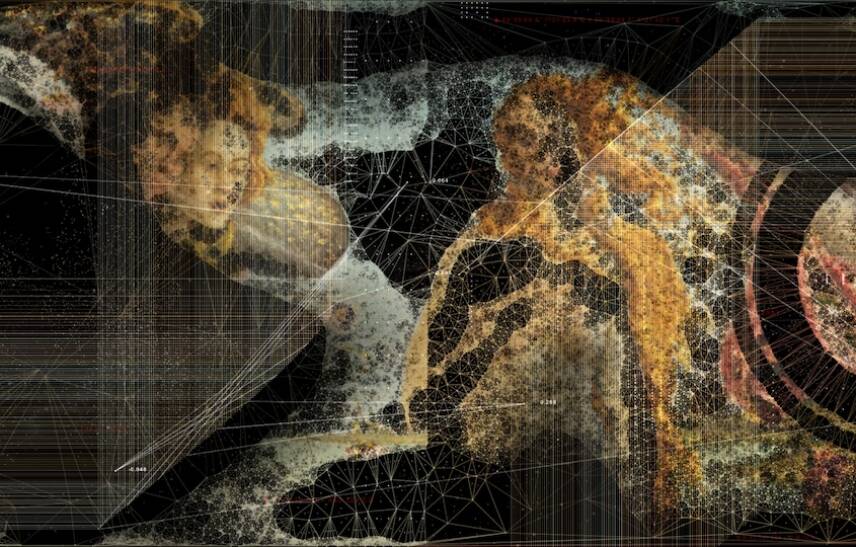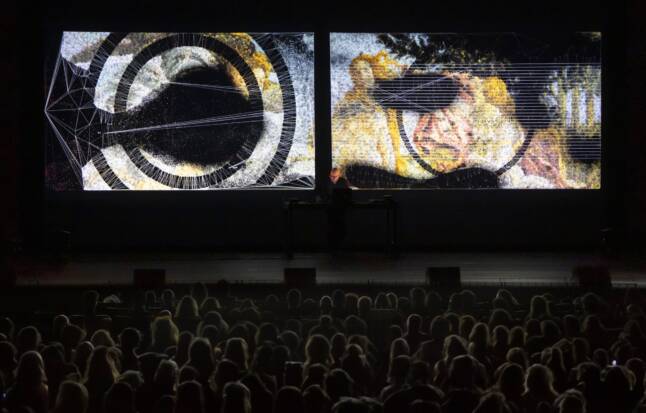AI ERROЯ?


F E M I N A | Riccardo Giovinetto
F E M I N A is an audiovisual performance for two screens, where polyphonic choirs blend with original electronic compositions, and Renaissance images transform into a dynamic visual stream that reacts to the sound. The project, by Italian artist Riccardo Giovinetto—multimedia creator, physicist, and academic—combines the analytical and creative potential of digital technology, intertwining the past with the present. The golden ratio, cherished by Renaissance masters, is juxtaposed with alternative mathematical proportions through computational algorithms. High-resolution portraits of women, masterpieces by artists such as Piero della Francesca, Botticelli, and Leonardo da Vinci, serve as the foundation for digital reinterpretation. The use of these archetypal figures emphasizes that, with the support of artificial intelligence, classical antiquity can be reinterpreted in the context of contemporary culture and technology.
The performance is co-organized by the Italian Cultural Institute in Krakow.

Warning: Trying to access array offset on value of type bool in /home/klient.dhosting.pl/photon/2024.patchlab.pl/public_html/wp-content/themes/patchlab_2024/template-parts/content-event.php on line 122
Warning: Trying to access array offset on value of type null in /home/klient.dhosting.pl/photon/2024.patchlab.pl/public_html/wp-content/themes/patchlab_2024/template-parts/content-event.php on line 122
TTC | Touchy Toy Collective
The performance by the Roman art group addresses the growing dominance of artificial intelligence in contemporary life and art, questioning the autonomy granted to AI entities. Quis custodiet ipsos custodes? – Who will guard the guardians themselves? This timeless question invites reflection on control and responsibility in the age of AI. The performance explores the blurred boundaries between AI-generated works and their human creators, and the balance between algorithmic independence and human intervention. The artists create cybernetic and humanoid faces in an ethereal, nebulous environment, using advanced visual techniques such as pixel sorting and transformation. Combined with a suggestive soundtrack, the audience is transported to a dystopian world beyond time and space, where a digital narrator, an artificial Virgil, raises questions about humanity’s role in the technological universe we are building.The performance by the Roman artistic group addresses the growing dominance of artificial intelligence in contemporary life and art, raising questions about the autonomy granted to AI subjects.

